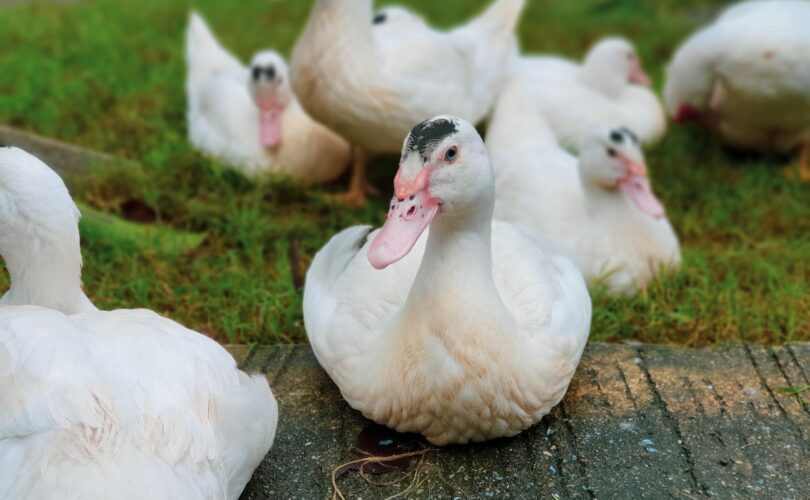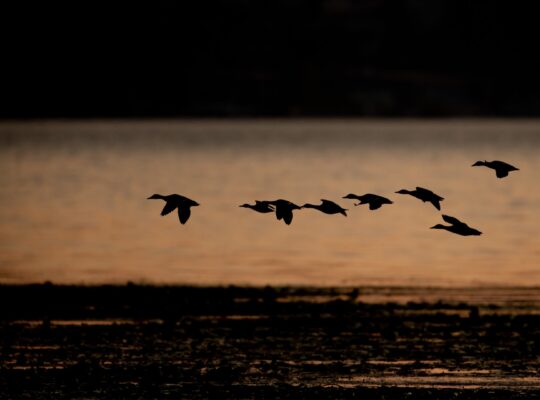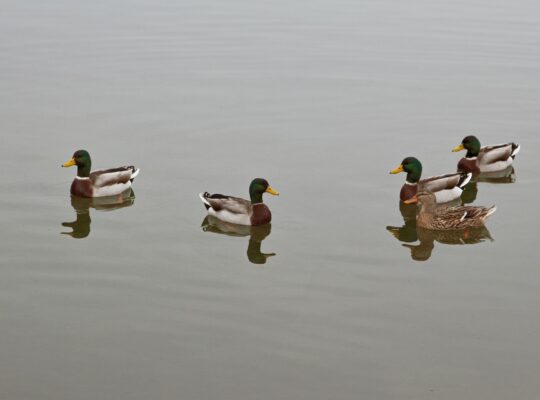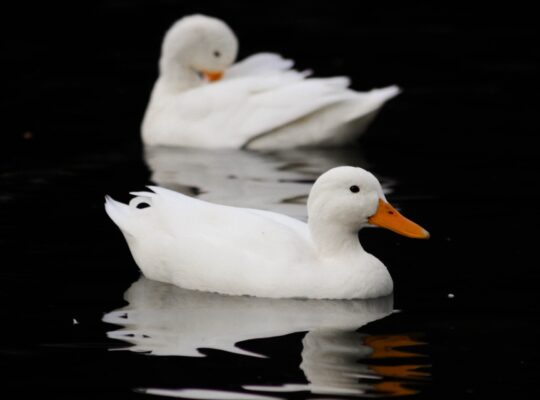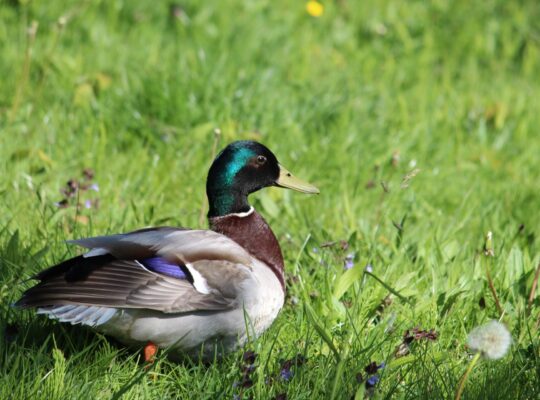Like other domestic ducks, pekin ducks have distinctive feather patterns that make sexing simple. Drake feathers are the curled, pointed feathers that sprout on male ducks’ tails. These feathers are a vital sign of a duck’s gender since they do not present in female ducks.
Pekin ducks typically begin sprouting drake feathers about 3-4 months when they achieve sexual maturity. This implies that most male Pekin ducks will have acquired drake feathers by the age of four months. On the other hand, the precise time of feather development might vary based on variables like heredity, diet, and environmental circumstances.
As male ducks acquire drake feathers, their tails become more prominent and adopt a more curled form. The drake feathers are also noticeably different in appearance from the smooth, rounded feathers present in females. Male Pekin ducks may acquire secondary sexual features such as a louder voice, longer neck, more significant body size, and tail feathers.
It is essential to remember that while drake feathers are a solid sign of a duck’s gender, they are not the only indicator that may be used. Differences in behavior and vocalization, as well as the form and size of the bird’s beak, are some other indicators that may be used to establish the bird’s gender.
Finally, Pekin ducks begin to acquire drake feathers at 3-4 months, corresponding to sexual maturity. These feathers are a good sign of a duck’s gender and may be used to tell males from females.
How Do You Tell If A Pekin Duck Is A Drake?
There are various techniques to determine if a Pekin duck is a drake (male) or a hen (female). These are some of the most reliable methods:
- As previously stated, male Pekin ducks acquire curled, pointed feathers on their tails, known as drake feathers. These feathers develop about 3-4 months of age and are a good sign of gender.
- Male Pekin ducks have a significantly more deep and raspy voice than females. They often emit a harsh, raspy quack or hissing sound during mating displays.
- Size and shape: Generally, male pekin ducks are giant and have a more robust look than females. They also have giant heads and thicker necks. Nevertheless, since individual birds vary in size and form, this approach may need to be more trustworthy.
- Bill size and shape: Male Pekin ducks have a more enormous, more prominent bill with a bulge at the base known as a “drake bump.” Females, on the other hand, have a more rounded, smaller bill.
- Male Pekin ducks are more violent and territorial than female Pekin ducks. They may also exhibit mating behaviors, such as dropping their head and tail while puffing up their chest.
It’s crucial to note that none of these techniques are perfect, and it might be difficult to tell the gender of a Pekin duck, particularly when they’re young. Genetic testing or waiting until the bird achieves sexual maturity (about 3-4 months of age) may be required in such circumstances.
At What Age Do Drakes Tail Feathers Curl?
Drake feathers are curled, pointed feathers that develop on the tails of male ducks and are a good predictor of a duck’s gender. Drakes often start growing these feathers about 3-4 months after they achieve sexual maturity. Nevertheless, the exact age at which drake feathers begin to curl depends on several circumstances.
Factors including genetics, diet, and environmental circumstances all impact the growth and development of drake feathers. Ducks bred for certain feather features may display sooner or later feather curling than their peers. Similarly, ducks with a balanced diet with enough protein and other nutrients are likelier to have healthy, well-formed feathers.
Environmental factors may also influence drake feather development and curling. For example, ducks reared in moist or humid conditions may have delayed feather growth or fewer curled feathers. Ducks reared in dry and well-ventilated settings, on the other hand, may have more noticeable and well-formed feathers.
At roughly 4-5 months of age, drake feathers will start to curl and become more prominent. Most male ducks will have obtained the distinctive curled curvature of their tail feathers by this age. Nevertheless, the time and degree of feather curling may vary, and some drakes may grow more conspicuous feathers than others.
Feathers of drakes often begin to curl sometime between four and five months. However, age might vary based on variables like diet, genetics, and the surrounding environment. These feathers are an accurate sign of the gender of a duck and may be used to differentiate between males and females of the species.
What Age Do Pekin Ducks Molt?
Pekin ducks typically begin to molt at about 6-8 months of age. However, this may vary depending on genetics, diet, and environmental circumstances. Molting is a natural process in which ducks lose their old feathers and develop new ones. It happens once a year in adult ducks.
Due to the energy necessary to produce new feathers, ducks may become less active and eat less throughout molting. They may also seem untidy or disheveled when old feathers fall off, and new ones grow in. Molting typically lasts many weeks, during which ducks are more susceptible to predators.
It is critical to supply pekin ducks with a diet rich in essential nutrients when they are going through molting to promote healthy feather development and general well-being. This may involve providing good quality feed, fresh water, and additional vitamins and minerals in supplement form. It is possible to alleviate stress and protect against infections and other health problems by maintaining a living area that is clean and dry.
In conclusion, Pekin ducks typically begin to molt between six and eight months. Ensuring that they get the appropriate nourishment and care during this period is essential for ensuring that their feathers grow correctly and that they remain in good health overall.

